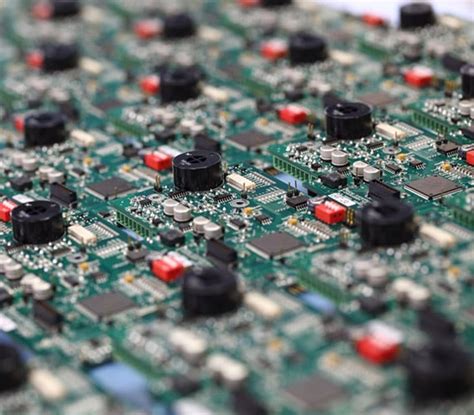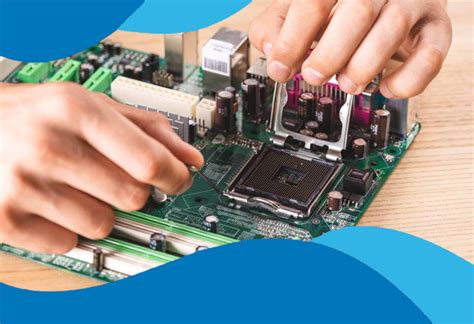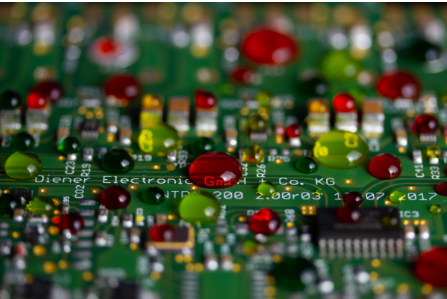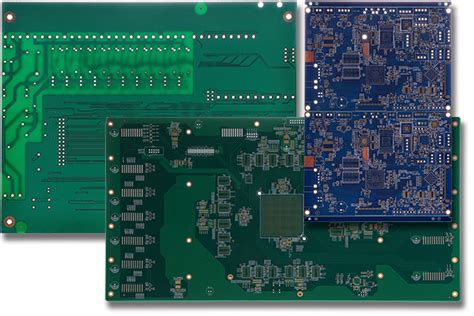How THT PCB Assembly Enhances Circuit Board Longevity
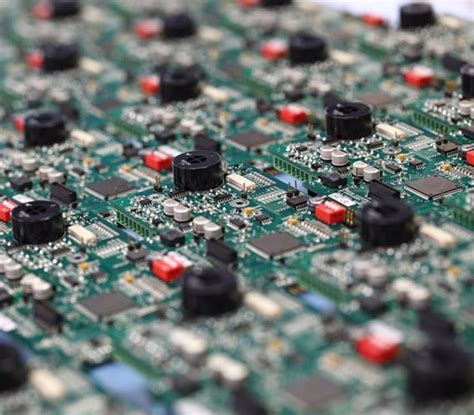
Key Takeaways
Through-Hole Technology (THT) PCB assembly offers distinct advantages for enhancing circuit board longevity, particularly in applications where durability is critical. Unlike surface-mount technology (SMT), THT components are secured through drilled holes on the board, creating mechanical bonds that resist physical stress, vibration, and thermal expansion. This robust connection method ensures components remain firmly anchored, reducing the risk of solder joint fatigue—a common failure point in high-stress environments.
The inherent strength of THT PCBA makes it ideal for industrial and automotive systems, where boards are exposed to extreme temperatures, moisture, and mechanical shocks. For example, in automotive control modules, through-hole connections maintain integrity even under constant vibration, while in industrial machinery, they withstand thermal cycling without compromising electrical performance.
Tip: When designing for THT assembly, prioritize component spacing and hole alignment to minimize stress concentrations and ensure consistent solder fillets.
Additionally, THT PCB assembly excels in managing heat fluctuations. The extended leads of through-hole components act as thermal buffers, dissipating heat more effectively than SMT counterparts. This reduces localized hotspots, prolonging the lifespan of sensitive components. For repair and maintenance, THT boards offer practical benefits: their larger, through-hole connections simplify troubleshooting and component replacement, extending serviceability without specialized tools.
While SMT dominates high-density designs, THT PCBA remains unmatched in scenarios demanding mechanical resilience and long-term reliability. By integrating THT where robustness is paramount, engineers can optimize circuit board durability while balancing cost and performance.

Understanding THT PCB Assembly and Its Core Advantages
THT PCB Assembly (Through-Hole Technology) is a foundational method in PCB assembly that involves inserting component leads through pre-drilled holes in the circuit board, followed by soldering to create secure electrical and mechanical connections. Unlike surface-mount technology (SMT), which relies on solder paste and reflow ovens, THT prioritizes durability through its robust physical anchoring of components. This approach is particularly advantageous in applications where longevity and reliability are critical, such as industrial machinery, automotive systems, and aerospace electronics.
A key strength of THT PCBA lies in its ability to withstand mechanical stress. Components soldered using through-hole techniques exhibit higher resistance to vibration and physical shocks due to the reinforced bond between leads and the board. This makes THT ideal for environments where boards are exposed to frequent movement or impacts. Additionally, the larger solder joints in THT assemblies provide superior thermal conductivity, effectively dissipating heat and minimizing the risk of failure during thermal cycling.
| Advantage | Description | Impact on Longevity |
|---|---|---|
| Mechanical Robustness | Leads anchored through holes resist physical stress. | Reduces risk of connection failure over time. |
| Thermal Stability | Larger solder joints manage heat more effectively. | Mitigates thermal expansion-related wear. |
| Environmental Resistance | Stronger connections endure humidity, dust, and corrosive agents. | Enhances reliability in harsh conditions. |
The PCB assembly process for THT also simplifies maintenance and repair. Through-hole components are easier to inspect, replace, or rework compared to miniature SMT parts, extending the board’s operational lifespan. Industries such as automotive manufacturing rely on THT PCBA for engine control units and power systems, where long-term performance under extreme temperatures and vibrations is non-negotiable. By prioritizing durability through design and material choices, THT PCB Assembly remains a cornerstone of resilient electronics in demanding applications.
The Role of Through-Hole Technology in Robust Circuit Connections
Through-hole technology (THT) remains a cornerstone of PCB assembly for applications requiring exceptional mechanical stability and long-term reliability. Unlike surface-mount techniques, THT involves inserting component leads through pre-drilled holes in the circuit board, creating physical anchors that reinforce electrical connections. This method ensures strong mechanical bonds between components and the substrate, which is critical for withstanding mechanical stress, vibration, and repeated thermal cycling. In industries such as aerospace, automotive, and industrial automation—where PCBA (printed circuit board assembly) must endure harsh operating conditions—the inherent durability of THT components significantly reduces the risk of connection failure.
The robustness of THT PCB assembly stems from the extended solder fillets formed around component leads. These fillets distribute stress more evenly across joints compared to surface-mount technology (SMT), minimizing cracks caused by thermal expansion or physical shocks. Additionally, the through-hole design allows for larger component sizes, which are inherently more resistant to environmental factors like humidity and dust. For example, in automotive systems, where temperature fluctuations and engine vibrations are common, THT-assembled boards maintain signal integrity and power delivery over decades of use.
Another advantage lies in the ease of inspection and repair. The visible leads and solder joints in THT PCB assembly simplify quality control during manufacturing and troubleshooting in the field. This transparency not only enhances production accuracy but also extends the lifespan of boards by enabling straightforward component replacements. When combined with high-temperature-rated materials, THT assemblies excel in managing heat dissipation, further safeguarding against premature wear. By prioritizing mechanical resilience and longevity, THT continues to play a vital role in PCB assembly strategies for mission-critical electronics.
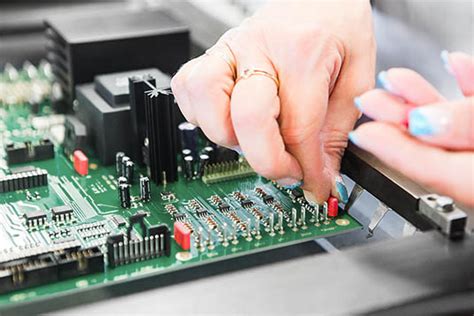
How THT Assembly Withstands Environmental Stress and Vibration
THT PCB assembly excels in environments where mechanical stress, vibration, and harsh conditions threaten electronic reliability. Unlike surface-mount components, through-hole technology (THT) components are anchored securely by leads inserted into pre-drilled holes and soldered on both sides of the board. This creates a mechanical bond that resists physical shocks, repetitive vibrations, and sudden impacts—common challenges in industrial machinery, automotive systems, and aerospace applications.
The inherent strength of THT PCBA lies in its robust physical connections. Through-hole components, such as connectors, transformers, and large capacitors, are soldered using fillers that penetrate the entire plated hole, forming a durable joint less prone to cracking under stress. This is critical in applications like automotive control units, where temperature fluctuations and engine vibrations can weaken surface-mount solder joints over time. Additionally, the extended lead length of through-hole parts allows for flexibility, absorbing energy from vibrations rather than transferring it to the board itself.
Environmental stressors, such as humidity, dust, and corrosive chemicals, further highlight the advantages of THT PCB assembly. The sealed nature of through-hole solder joints minimizes exposure to contaminants, reducing the risk of corrosion-related failures. In contrast, surface-mount components may leave gaps where moisture or debris can accumulate, compromising long-term reliability.
For industries requiring extended operational lifespans, such as heavy machinery or renewable energy systems, THT PCBA offers a distinct edge. Its ability to maintain electrical integrity under extreme conditions reduces maintenance cycles and downtime. Moreover, the repairability of through-hole components simplifies replacements or upgrades, further extending the board’s service life.
By prioritizing THT assembly in designs exposed to dynamic or unpredictable environments, engineers ensure that circuit boards deliver consistent performance while withstanding the rigors of real-world use. This approach not only enhances durability but also aligns with cost-effective strategies for high-reliability PCB assembly across demanding sectors.
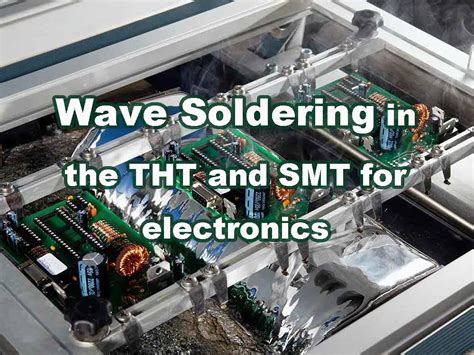
Thermal Stability: THT’s Impact on Managing Heat Fluctuations
THT PCB assembly plays a critical role in ensuring thermal stability, a key factor in extending the lifespan of circuit boards. Unlike surface-mount technology (SMT), through-hole components create robust mechanical bonds by passing leads through drilled holes in the board, which are then soldered on the opposite side. This structural integrity allows PCBA designs to better withstand thermal cycling—repeated heating and cooling during operation. In high-temperature environments or applications with frequent power surges, the physical anchoring of components reduces stress on solder joints, minimizing the risk of cracks or failures.
The inherent design of THT PCB assembly also enhances heat dissipation. Larger through-hole components, such as connectors or transformers, often feature extended leads that act as natural heat sinks, drawing thermal energy away from sensitive areas. Additionally, the use of durable materials like high-temperature solder and glass-reinforced substrates in PCBA processes ensures boards remain stable even under prolonged thermal exposure. This is particularly vital in industrial settings or automotive systems, where circuit boards face extreme temperature shifts, from sub-zero conditions to engine-generated heat.
Moreover, the spacing between through-hole components in THT PCB assembly allows for improved airflow, reducing localized hotspots. Engineers often leverage this advantage in designs requiring long-term reliability, such as power supplies or control modules. By combining thermal management techniques—like strategic placement of heat-sensitive parts and integrating thermal vias—PCBA workflows using THT can achieve a balanced thermal profile, further mitigating wear caused by expansion and contraction.
In summary, the mechanical and material advantages of THT PCB assembly directly contribute to managing heat fluctuations, ensuring circuit boards maintain performance and longevity even in the most thermally demanding applications.

Durability in Demanding Applications: Industrial and Automotive Use Cases
In industrial and automotive environments, PCB assembly processes must prioritize resilience to ensure long-term reliability under harsh conditions. THT PCB assembly excels in these settings due to its inherent mechanical strength and robust through-hole connections. Unlike surface-mount alternatives, through-hole components are anchored securely through drilled holes in the board, creating bonds that withstand high levels of vibration, shock, and thermal cycling. This makes PCBA (printed circuit board assembly) designs using THT ideal for machinery, automotive control systems, and heavy equipment, where failure due to environmental stress is not an option.
For instance, automotive applications demand circuit boards capable of enduring extreme temperature fluctuations, from sub-zero winters to engine compartment heat. THT assembly ensures components like connectors, power modules, and relays remain firmly soldered, preventing cracks or disconnections caused by thermal expansion. Similarly, industrial automation systems rely on THT’s durability to maintain performance in dusty, humid, or corrosive environments. The through-hole soldering process creates fillets that absorb mechanical stress, a critical advantage for equipment subjected to constant vibration, such as robotic arms or conveyor systems.
Moreover, THT PCB assembly simplifies maintenance and repair in these sectors. Through-hole components are easier to inspect, replace, or rework compared to miniaturized surface-mount devices (SMDs), reducing downtime in mission-critical operations. Automotive manufacturers, for example, leverage this repairability to extend the lifespan of engine control units (ECUs) and infotainment systems, where component longevity directly impacts vehicle reliability.
By integrating THT into PCB design, engineers achieve a balance between performance and durability. The technology’s ability to manage thermal stability and resist mechanical wear ensures that boards operate consistently over decades, even in the most demanding applications. This makes THT a cornerstone of industrial and automotive PCBA strategies, where failure is not just costly but potentially hazardous.
Comparing THT and SMT: Longevity Benefits of Through-Hole Components
When evaluating PCB assembly methods, the choice between through-hole technology (THT) and surface-mount technology (SMT) significantly impacts circuit board longevity. While SMT excels in miniaturization and high-density designs, THT PCB assembly offers distinct durability advantages, particularly in applications where mechanical resilience and long-term reliability are critical. Through-hole components, anchored by leads inserted into drilled holes and soldered on both sides of the board, create robust physical connections that withstand mechanical stress, vibration, and thermal cycling far better than surface-mounted counterparts. This structural integrity is vital for PCBA deployed in harsh environments, such as industrial machinery or automotive systems, where components face constant vibration or temperature fluctuations.
The soldering process in THT also contributes to longevity. The through-hole solder joints form a stronger bond compared to the reflow-soldered connections in SMT, reducing the risk of cracks or detachment over time. Additionally, through-hole components dissipate heat more effectively due to their larger size and vertical orientation, mitigating thermal degradation—a common failure mode in tightly packed SMT designs. For high-power or high-frequency applications, this thermal stability ensures consistent performance and extends the operational lifespan of the board.
While SMT dominates modern electronics for its cost efficiency and space-saving benefits, THT PCB assembly remains indispensable in scenarios demanding reliability over decades. For example, aerospace systems, medical devices, and infrastructure controls often prioritize THT for its proven resilience. Furthermore, maintenance and repair are simpler with through-hole components, as their larger size and accessibility allow for easier rework—a key factor in extending the lifecycle of legacy or mission-critical systems. By balancing SMT’s efficiency with THT’s durability, designers can optimize PCBA for both performance and longevity.

Maintenance and Repair Advantages for Extended Board Lifespan
THT PCB assembly offers significant advantages in maintenance and repair, directly contributing to prolonged circuit board longevity. Unlike surface-mount technology (SMT), through-hole components are physically anchored through the board, creating stronger mechanical bonds. This structural integrity simplifies troubleshooting and component replacement, as technicians can easily access and desolder parts without risking damage to adjacent traces or layers. For industries requiring frequent upgrades or repairs—such as automotive control systems or industrial machinery—this accessibility reduces downtime and extends the PCBA lifecycle.
The durability of THT assembly also minimizes wear during maintenance cycles. Through-hole solder joints are less prone to cracking under mechanical stress, making them ideal for environments with vibration or repeated thermal cycling. For example, in high-temperature industrial settings or outdoor electronics, THT PCB assembly ensures connections remain stable even after multiple repair interventions. Additionally, the larger size of through-hole components allows for manual inspection and rework, a critical factor in legacy systems where automated tools may not be compatible.
Moreover, the PCB assembly process for THT inherently supports modular repairs. Faulty components can be replaced individually without necessitating a full board redesign, preserving the original layout’s integrity. This modularity is particularly valuable in aerospace or medical devices, where reliability and traceability are paramount. By combining robust construction with repair-friendly design, THT PCB assembly not only enhances operational lifespan but also reduces long-term costs associated with board replacement or complete overhauls.
Best Practices for Optimizing THT Assembly in PCB Design
To maximize the durability and performance of PCB assembly using through-hole technology (THT), designers must adhere to proven strategies that align with the method’s inherent strengths. First, component spacing plays a critical role in reducing mechanical stress during soldering and operation. Adequate clearance between through-hole components ensures minimal interference during thermal expansion and vibration, which is vital for applications in industrial or automotive environments. Additionally, optimizing hole-to-lead ratios enhances solder joint integrity. A slightly larger hole diameter—typically 0.1–0.3 mm wider than the component lead—allows for consistent solder fillets, improving resistance to environmental stressors like humidity or temperature swings.
Material selection is equally pivotal. High-quality substrates, such as FR-4 with a high glass transition temperature (Tg), provide better thermal stability during PCBA processes, reducing the risk of delamination under repeated heat cycles. For boards exposed to harsh conditions, conformal coatings or encapsulation can further shield through-hole connections from contaminants like dust or moisture.
Another key consideration is manual vs. automated soldering. While automated insertion machines ensure precision for high-volume production, manual soldering may be preferred for prototyping or low-volume runs to avoid overheating sensitive components. Regardless of the method, maintaining consistent solder flow and avoiding cold joints is essential for long-term reliability.
Finally, rigorous testing protocols—such as thermal cycling, vibration testing, and in-circuit testing (ICT)—validate the robustness of THT PCB assembly designs. By simulating real-world stresses early in the development phase, engineers can identify and rectify weaknesses before deployment. Integrating these best practices not only extends the lifespan of circuit boards but also leverages the inherent durability of through-hole technology in demanding applications.
Conclusion
THT PCB assembly plays a pivotal role in extending the operational lifespan of circuit boards, particularly in environments where reliability and durability are non-negotiable. By leveraging through-hole technology, this method creates robust mechanical bonds between components and the board, significantly reducing the risk of connection failure under vibration or mechanical stress. Unlike surface-mount alternatives, through-hole components anchor securely through the board, making them ideal for high-impact applications such as industrial machinery, automotive systems, and aerospace electronics.
The inherent strength of THT PCBA also ensures superior resistance to environmental stressors, including temperature fluctuations, humidity, and corrosive elements. This resilience is critical in applications where boards are exposed to harsh conditions, as the through-hole solder joints maintain integrity even during rapid thermal cycling. Additionally, the larger size of through-hole components allows for better heat dissipation, further mitigating risks associated with thermal degradation.
In demanding sectors like automotive manufacturing, THT assembly is favored for its ability to withstand decades of operational wear. The method’s repairability further enhances longevity, as technicians can easily replace or rework components without compromising adjacent parts—a stark contrast to densely packed SMT-based designs. While modern PCB assembly trends lean toward miniaturization, THT remains indispensable for applications prioritizing durability over space efficiency. By adhering to best practices in design, such as optimizing hole sizes and selecting high-quality materials, engineers can maximize the lifespan advantages of THT PCBA, ensuring reliable performance in even the most challenging environments.
FAQs
What makes THT PCB assembly more durable than other methods?
THT PCB assembly leverages through-hole technology to create robust mechanical bonds between components and the board. These connections are less prone to failure under mechanical stress or thermal cycling, making them ideal for high-reliability applications like industrial machinery or automotive systems.
How does THT assembly improve resistance to environmental stress?
The through-hole soldering process in PCBA ensures components are securely anchored, reducing susceptibility to vibration and moisture ingress. This makes THT-assembled boards suitable for harsh environments where temperature fluctuations or physical shocks are common.
Can THT components handle high-power applications better than SMT?
Yes. Through-hole components used in PCB assembly typically have larger leads, enabling better heat dissipation and higher current-carrying capacity. This reduces the risk of overheating and extends the board’s operational lifespan in power-intensive scenarios.
Is THT assembly easier to repair or modify?
Absolutely. The physical accessibility of through-hole components simplifies manual repairs or replacements during maintenance. This reduces downtime and costs, especially for legacy systems or prototypes requiring frequent adjustments.
What industries benefit most from THT PCB assembly?
Industries prioritizing longevity over miniaturization—such as automotive, aerospace, and industrial automation—often opt for THT-based PCBA. These sectors value the technology’s ability to withstand extreme conditions while maintaining electrical stability over decades.
How can designers optimize THT assembly for durability?
Using high-quality solder alloys, ensuring proper hole-to-lead ratios, and avoiding overcrowded layouts are critical. Additionally, conformal coatings can enhance protection against corrosion and contaminants in demanding environments.
Explore Professional THT PCB Assembly Solutions
For tailored PCB assembly services that prioritize longevity and reliability, please click here to connect with experts specializing in robust THT PCBA solutions.

